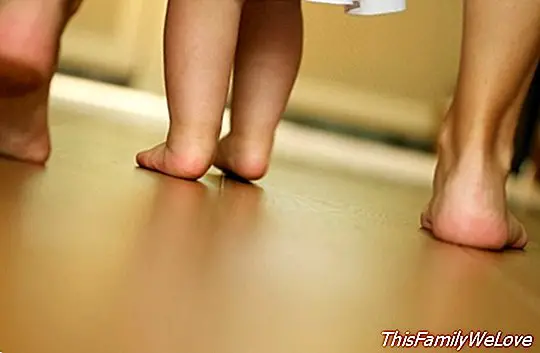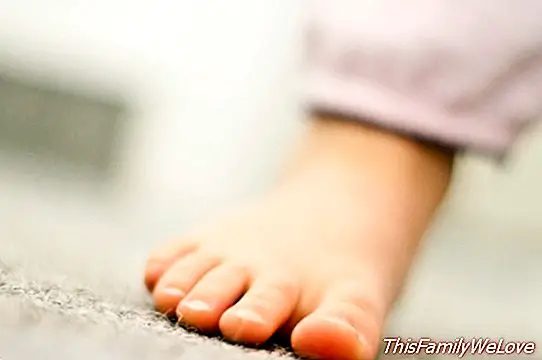Everything you need to know about flat feet in babies and children


When talking about abnormalities in the feet of children, the most frequent is that of flat feet, which occurs when the foot loses its central curve (the bridge) and the heel is inclined in valgus, that is, it falls towards its inner edge. We tell you everything you need to know about this.
The percentage of children with flat feet is 42 percent in ages between three and five years, although it drops to six percent in the case of adolescents, as explained by the Spanish Association of Pediatrics in Primary Care (Aeped), which explain that the tissues of children are softer and lax, which makes them stretch more and that can not maintain the normal alignment of the joints of the feet when they stand up.
"If there is a history in the parents, it is more usual for the children to have it", they comment, while indicating that in The vast majority of cases flat feet do not represent any problem and do not need treatment. We answer some common questions about this with the information provided by the association.
When should the appearance of flatfoot be consulted?
When the children stand up they do not have a plantar arch, but the arch is formed little by little: in the first six years of life, and even up to 10. Therefore, it is not necessary to be overwhelmed. "In the controls that are carried out in the health center the pediatrician reviews the feet and the way of walking of the children", remember these experts.
Even so, if you notice that your child walks in a way that does not seem normal and, above all, if complains of foot pain, It is good that you take it to the pediatrician to do the pertinent tests.
The diagnosis of flat feet
To diagnose flat foot it is usually enough with the clinical history and the exploration. "The pediatrician will want to know if there is pain and if you have difficulty walking or running," they comment, emphasizing that Pain is "the most important thing".
Identifying the flat foot is usually simple, since it is observed as soon as the plant the foot is in contact with the ground: there is no arch that is usually on the inside of the foot. Also, it is also often review how are the support areas of the sole: "in feet with good arch the skin that delimits it, not touching the ground, is pale," they comment, adding that in the flat feet "This area does touch the ground and may be more red."
Another possibility is that the child has flexible flat foot, the most common way. This is identified if when standing on tiptoe you notice that an arc appears on the sole of the foot that did not exist before.

Types of flat feet
Flexible flat foot, checked after changes in the heel and the plantar arch when standing on tiptoe. It's very common. It may be related to the existence of generalized laxity in the fingers of the hand and other joints. We must distinguish flat feet that have a short Achilles tendon, of those that do not. In the former, the discomfort is more frequent and it is necessary to perform stretching physiotherapy.
Rigid flat foot, That does not change when standing on tiptoe. It is also more frequently associated with pain and limitation of mobility. Unlike the flexible flat foot without short Achilles, it needs treatment. The most common cause is the formation of bridges between the bones in the heel, what prevents it from moving normally (tarsal coalition). It is present in about 3% of the population. Rarely, the cause of the stiff foot is a neurological disease or a congenital disorder.
When to go to the children's orthopedist
Pediatricians advise to go to the orthopedist specialized in children when there are symptoms such as pain, lameness, a short Achilles tendon or when the deformity is rigid. "The orthopedist will assess the need for radiographs, collect the footprint and make a tread study," they explain, something that will "delimit the magnitude of the deformity, locate it and record it for control".
The treatment of flat foot
As we have said before, the most frequent is that no treatment is needed, as the foot progresses to 10 years and most adult flat feet do not show symptoms or limitations in daily life. The use of a suitable type of footwear and in some cases of adapted templates can be recommended.
Now, if your son has a Achilles tendon short, something that is usually related to flat feet, you will need stretching physiotherapy and follow-up. In the case of having a flat foot, soft discharge templates are usually prescribed to correct the position of the heel and raise the plantar arch.
Angela R. Bonachera
<



